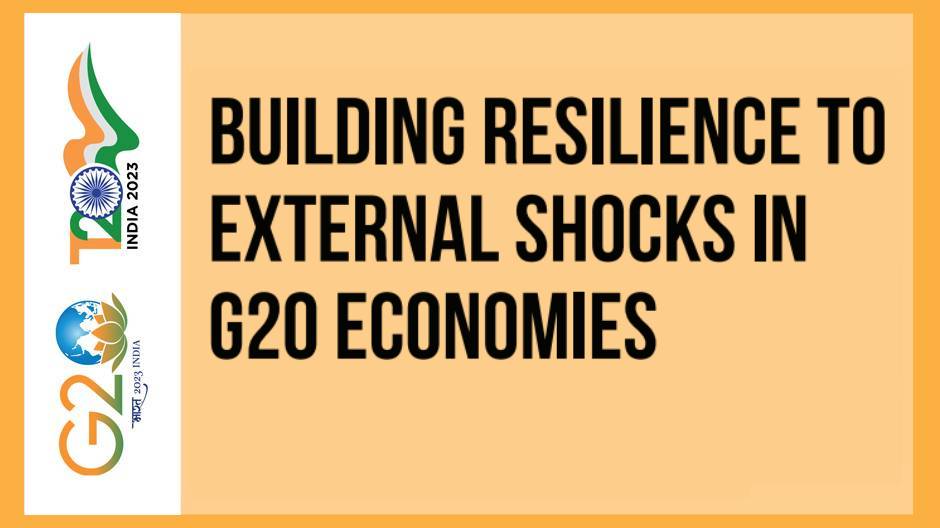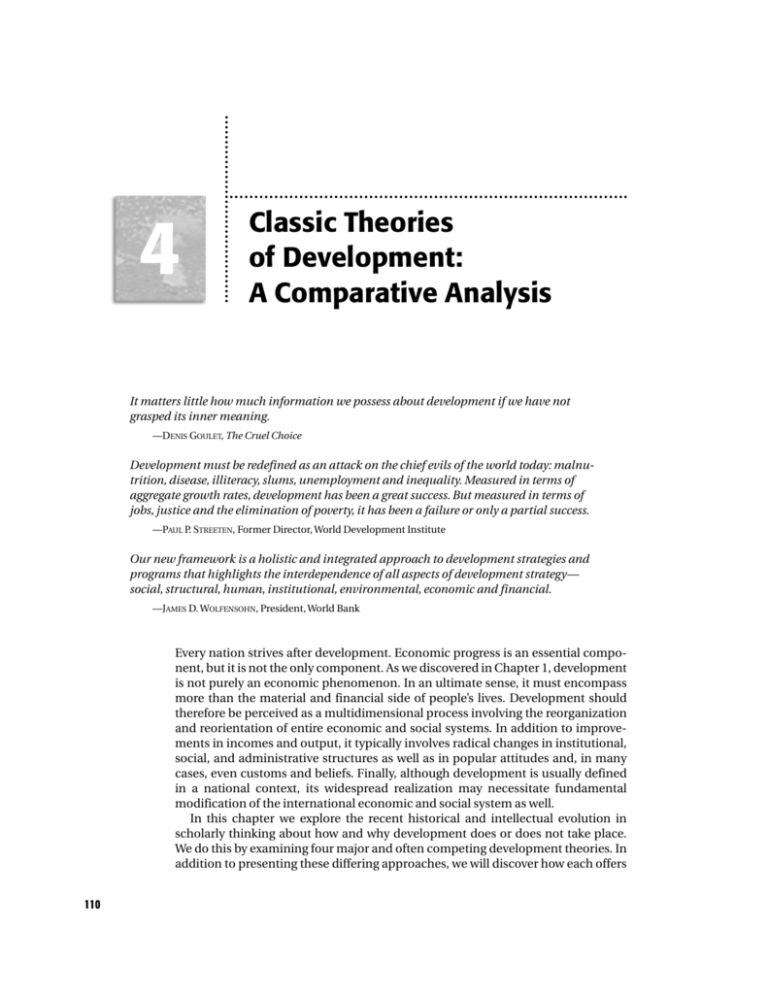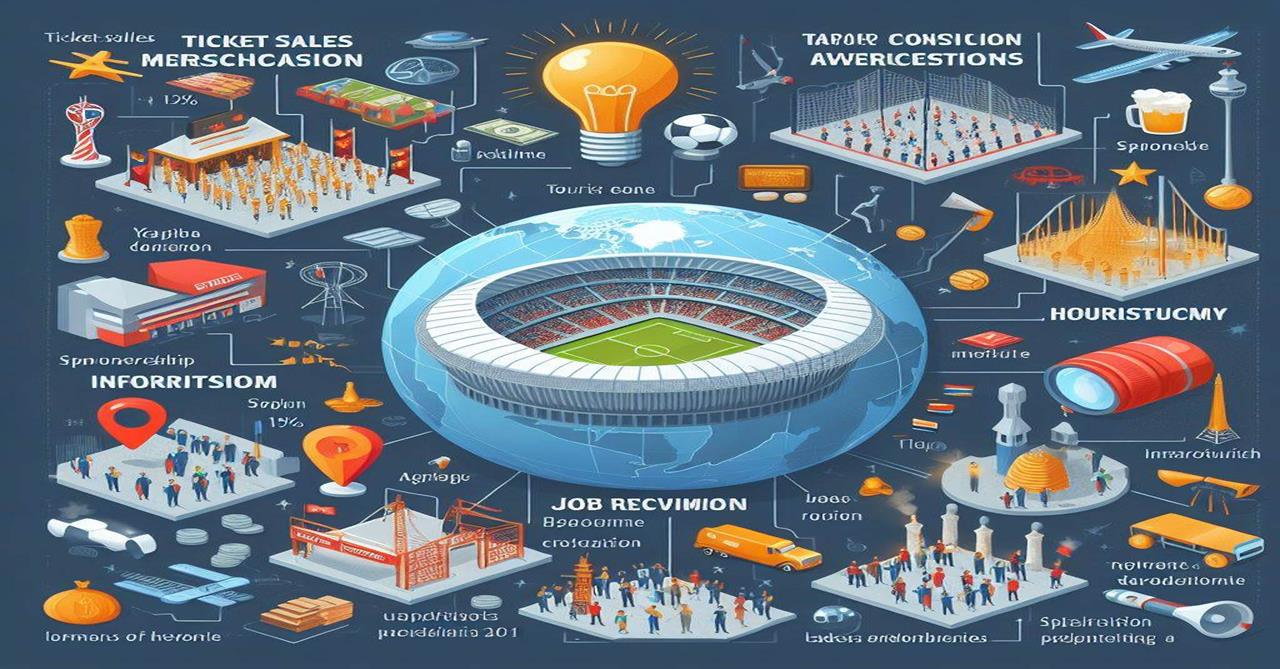
Global Economic Resilience: Building Against Future Shocks – Your Beginner’s Guide
The global economy often feels like a ship navigating through unpredictable waters. Just when we think we’re sailing smoothly, a sudden storm – a pandemic, a financial crisis, a geopolitical conflict, or even climate disasters – can hit, threatening to capsize everything. In recent years, we’ve experienced unprecedented turbulence, from the COVID-19 pandemic to supply chain disruptions and geopolitical tensions. These events have highlighted a critical need: Global Economic Resilience.
But what exactly does "economic resilience" mean, and how do we build it? This article will break down this vital concept in easy-to-understand terms, exploring why it’s more crucial than ever and the key strategies we can adopt to prepare for tomorrow’s challenges.
What is Global Economic Resilience? A Simple Explanation
Imagine a sturdy building designed to withstand earthquakes and hurricanes. It doesn’t mean the building will never feel a tremor or a gust of wind, but it’s built with strong foundations, flexible materials, and smart engineering to absorb the shock, remain standing, and quickly recover.
Global economic resilience works similarly. It’s the ability of the world’s economy – and the individual countries, businesses, and people within it – to:
- Anticipate: See potential problems coming before they hit.
- Absorb: Take a hit from a crisis without completely falling apart.
- Adapt: Quickly change and adjust strategies when things go wrong.
- Recover: Bounce back swiftly and strongly after a shock, ideally emerging even stronger.
In essence, it’s about moving from a reactive "crisis management" approach to a proactive "crisis prevention and preparedness" mindset. It’s not about preventing all shocks (some are unavoidable), but about making sure they don’t cause catastrophic, long-lasting damage.
Why Building Resilience is More Critical Than Ever Before
For centuries, economies have faced ups and downs. So, what makes resilience so urgent now?
- Increased Interconnectedness: Our world is a giant web. What happens in one corner (e.g., a factory shutdown in Asia) can quickly affect supply chains, prices, and jobs across the globe. This "domino effect" means local shocks can become global crises almost instantly.
- New and Complex Threats: We’re facing a wider range of threats than ever before:
- Pandemics: As seen with COVID-19, health crises can halt economies.
- Climate Change: Extreme weather events (floods, droughts, wildfires) destroy infrastructure, disrupt agriculture, and displace populations, with massive economic costs.
- Geopolitical Tensions: Wars, trade disputes, and political instability disrupt markets and supply lines.
- Cyber Attacks: Digital infrastructure is vital, but vulnerable to malicious attacks that can paralyze industries.
- Financial Volatility: Sudden market crashes or inflation spikes can erode wealth and confidence.
- Inequality and Vulnerability: The same shocks often hit the poorest and most vulnerable populations the hardest, widening the gap between rich and poor and creating social instability.
- Faster Pace of Change: Technology and global events move at lightning speed, requiring economies to be agile and responsive.
Ignoring these risks is like building a house on a fault line without earthquake-proofing. The consequences can be devastating, leading to widespread job losses, poverty, and social unrest.
The Pillars of Global Economic Resilience: How Do We Build It?
Building a resilient global economy requires a multi-faceted approach, focusing on several key areas. Think of these as the strong pillars supporting our "sturdy economic building."
1. Strengthening Global Supply Chains: Making Them More Robust
The pandemic exposed how fragile our global supply chains (the networks that bring products from raw materials to consumers) can be. When one link breaks, the whole chain can snarl.
- What it means for resilience: Ensuring essential goods and components can still reach where they’re needed, even if one source or route is disrupted.
- How to build it:
- Diversification: Instead of relying on just one country or factory for a key product, businesses should have multiple suppliers from different regions.
- Localization: Bringing some production closer to home can reduce reliance on long, complex international shipping.
- Visibility and Technology: Using data and digital tools to track goods in real-time and identify potential bottlenecks before they become major problems.
- Buffer Stocks: Keeping a bit more inventory of critical goods to weather short-term disruptions.
2. Robust Financial Systems: Preparing for Economic Storms
Just like a strong banking system prevents individual bank failures from spiraling into a national crisis, robust financial systems are crucial for global stability.
- What it means for resilience: Preventing financial crises (like the 2008 meltdown) and ensuring that money can flow freely to support businesses and individuals during tough times.
- How to build it:
- Strong Regulations: Governments and international bodies set rules to ensure banks and financial institutions are stable, have enough cash, and don’t take excessive risks.
- Debt Management: Helping countries and individuals manage their debts responsibly so they don’t become overwhelmed during economic downturns.
- International Cooperation: Central banks and finance ministries around the world work together to coordinate policies and share information to prevent global financial shocks.
- Digital Currencies and Payment Systems: Exploring secure and efficient digital ways to send and receive money, which can make financial transactions faster and more resilient.
3. Addressing Climate Change: A Foundation for Sustainable Growth
Climate change isn’t just an environmental issue; it’s a massive economic threat. Rising sea levels, extreme weather, and resource scarcity directly impact industries, infrastructure, and livelihoods.
- What it means for resilience: Protecting economies from the physical and economic damage caused by a changing climate and transitioning to cleaner, more sustainable models.
- How to build it:
- Investing in Green Energy: Shifting from fossil fuels to renewable energy (solar, wind) reduces reliance on volatile energy markets and creates new industries.
- Sustainable Practices: Encouraging businesses and agriculture to adopt methods that protect natural resources and reduce pollution.
- Climate Adaptation: Building infrastructure (like sea walls or drought-resistant crops) that can withstand future climate impacts.
- Carbon Pricing and Incentives: Using economic tools (like taxes on carbon emissions or subsidies for green technologies) to encourage environmentally friendly behavior.
4. Digital Transformation & Innovation: The Agile Economy
Technology is rapidly changing how we live and work. Embracing digital tools and fostering innovation can make economies more adaptable and productive.
- What it means for resilience: Using technology to improve efficiency, create new solutions, and allow economies to continue functioning even when physical interaction is limited (e.g., remote work during a pandemic).
- How to build it:
- Investing in Digital Infrastructure: Expanding access to high-speed internet, cloud computing, and secure data networks.
- Promoting Digital Literacy: Ensuring people have the skills to use digital tools effectively, from basic computer use to advanced coding.
- Fostering Innovation: Supporting research and development in areas like artificial intelligence, biotechnology, and automation, which can create new economic opportunities and solutions.
- Cybersecurity: Protecting digital systems from attacks that could disrupt essential services and financial markets.
5. Inclusive Growth & Social Safety Nets: Protecting People
An economy is only truly resilient if its people are resilient. High inequality and widespread poverty make a society more vulnerable to shocks.
- What it means for resilience: Ensuring that economic growth benefits everyone, and that systems are in place to support those who are hit hardest by crises.
- How to build it:
- Quality Education & Skill Development: Providing access to good schools and training programs helps people adapt to changing job markets and build stable careers.
- Accessible Healthcare: A healthy workforce is a productive workforce. Strong public health systems are also vital for responding to pandemics.
- Social Protection Programs: Unemployment benefits, food assistance, and affordable housing programs act as safety nets, preventing people from falling into extreme poverty during crises.
- Fair Wages & Labor Protections: Ensuring workers are paid fairly and have safe working conditions contributes to social stability and economic well-being.
6. International Cooperation & Governance: Working Together
Many of the biggest challenges we face (pandemics, climate change, financial crises) don’t respect national borders. Solving them requires countries to work together.
- What it means for resilience: Building trust and effective mechanisms for countries to collaborate on global challenges, share resources, and coordinate policies.
- How to build it:
- Strengthening International Institutions: Supporting organizations like the UN, World Health Organization (WHO), and World Bank to coordinate global responses.
- Fair Trade & Open Markets: Promoting trade policies that are mutually beneficial and reduce barriers, while ensuring fair competition.
- Diplomacy & Conflict Resolution: Investing in peaceful solutions to disputes to prevent geopolitical conflicts that disrupt trade and stability.
- Knowledge Sharing: Encouraging countries to share best practices, research, and data to learn from each other’s experiences.
The Role of Everyone: Individuals, Businesses, and Governments
Building global economic resilience isn’t just the job of a few experts or international organizations. It’s a collective effort:
- Governments: Play a leading role by creating sound policies, investing in infrastructure, regulating financial markets, and fostering international cooperation. They must balance short-term political needs with long-term resilience goals.
- Businesses: Must be proactive in diversifying supply chains, investing in technology, adopting sustainable practices, and prioritizing employee well-being. Risk management and adaptability are key.
- Individuals: Can contribute by building their own financial resilience (e.g., saving, managing debt), continuously learning new skills, participating in civic life, and supporting businesses and policies that promote sustainability and fairness.
Challenges on the Road to Resilience
While the path to greater resilience is clear, it’s not without hurdles:
- Short-Term Thinking: Politicians and businesses often focus on immediate gains rather than long-term investments in resilience.
- Geopolitical Divides: Trust and cooperation between nations can be difficult to achieve when political tensions are high.
- Funding Gaps: Investing in resilience (e.g., green infrastructure, social safety nets) requires significant financial resources, especially for developing countries.
- Resistance to Change: Shifting away from old habits or established industries can face strong opposition.
- Unequal Burdens: The costs and benefits of building resilience may not be evenly distributed, leading to disagreements.
Conclusion: A Shared Journey Towards a Stronger Future
Global economic resilience is not a destination but an ongoing journey. It requires constant vigilance, adaptation, and a willingness to learn from past shocks. By focusing on stronger supply chains, robust financial systems, climate action, digital innovation, inclusive growth, and unwavering international cooperation, we can build an economy that is not only prepared for future shocks but also more equitable, sustainable, and prosperous for everyone.
The challenges are immense, but so is the potential reward: a world economy capable of bending without breaking, and bouncing back stronger than before. It’s an investment in our collective future.
Frequently Asked Questions (FAQs) About Economic Resilience
Q1: What is an "economic shock"?
A: An economic shock is an unexpected event that significantly impacts an economy. Examples include natural disasters (earthquakes, hurricanes), pandemics, sudden changes in oil prices, financial crises, or major political events like wars.
Q2: Can we really prevent all economic shocks?
A: No, it’s impossible to prevent all shocks, as many are unpredictable (like natural disasters or new viruses). However, we can build resilience to minimize their impact, recover faster, and even anticipate some risks to prepare better.
Q3: Who is responsible for building global economic resilience?
A: It’s a shared responsibility. Governments set policies and invest in infrastructure. Businesses adapt their operations and supply chains. International organizations facilitate cooperation. And individuals contribute through their choices and skills.
Q4: How does climate change affect economic resilience?
A: Climate change directly impacts economic resilience by causing more frequent and intense extreme weather events (damaging infrastructure, agriculture), displacing populations, creating resource scarcity, and affecting public health. It also creates financial risks related to industries dependent on fossil fuels.
Q5: What’s the difference between "economic stability" and "economic resilience"?
A: Economic stability refers to an economy that is generally calm, predictable, and growing steadily, without major ups and downs. Economic resilience is the ability to maintain stability (or quickly return to it) when unexpected shocks do occur. A resilient economy can handle instability without collapsing.




Post Comment